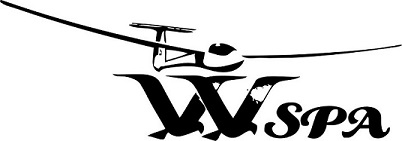Written By Ishitha Arekapudi
The aviation industry is in the midst of a pivotal transformation, driven by technological advancements and increasing global demand. However, this growth is accompanied by a critical challenge—an impending shortage of skilled professionals. From pilots to aerospace engineers, the U.S. aviation sector faces a shortage of thousands of workers. As someone deeply involved in the world of aviation, I have seen the importance of addressing this gap firsthand. Through initiatives like Sky Riders, a program I founded to empower young people in aviation, we aim to inspire the next generation of aerospace professionals and bridge the workforce gap.
The U.S. aviation industry is not only crucial to the nation’s economy, contributing 5.1% of GDP, but also to the global transportation network. Yet, despite the industry’s growth, fewer students are pursuing aviation careers, particularly in fields like piloting, maintenance, and aerospace engineering. This decline is alarming, especially as the aviation industry braces for a significant shortage of professionals by 2040.
This gap is a result of several factors, including a lack of exposure to aviation careers, insufficient STEM readiness, and underrepresentation of women and minorities in the field. To ensure the future of aviation is as innovative and efficient as possible, it’s essential to inspire and equip today’s youth with the skills to succeed in these high-demand fields.
STEM education plays a crucial role in developing the aviation workforce of tomorrow. Recognizing this, the U.S. government and industry leaders have ramped up efforts to engage students, particularly those from underrepresented groups, in STEM programs. Organizations like the Federal Aviation Administration (FAA) have established outreach initiatives to promote STEM education and encourage youth to pursue aviation careers.
In my work with Sky Riders, I’ve seen firsthand how critical it is to provide students with access to aviation-related education and hands-on experiences. Sky Riders not only offers flight training but also connects youth with mentors and professionals in the industry. This exposure is pivotal in fostering the next generation of pilots, engineers, and aerospace leaders.
While the demand for STEM professionals is growing, many students are not adequately prepared for careers in these fields. In fact, less than 20% of high school students met college readiness benchmarks in math and science as of 2018. This gap in STEM readiness is a significant barrier to workforce growth and represents an urgent challenge for the aviation industry.
To address this, the FAA and other organizations have been working to ensure that students are not only encouraged to enter aviation fields but are also given the support they need to succeed. Programs like the FAA’s Aviation and Space Education (AVSED) Program provide students with valuable mentorship and educational resources to help them pursue aviation careers.
An important component of addressing the aviation workforce shortage is ensuring that the industry reflects the diversity of the country it serves. There is a growing recognition that a diverse workforce is critical to the success of the aviation industry. The FAA is making concerted efforts to increase the number of female, minority, and disabled professionals in aviation, recognizing the need for diverse perspectives in an industry undergoing rapid change.
In addition to these efforts, programs like Sky Riders are committed to breaking down barriers and offering equal access to aviation opportunities for all youth. Through mentorship, scholarships, and leadership development, we are working to create a more inclusive and representative aviation workforce.
Each of us has a role to play in addressing the aviation workforce challenge. Here are a few ways you can help inspire and equip the next generation of aviation professionals:
- Mentor Young People: Share your experiences with students and provide guidance as they explore aviation careers.
- Volunteer with STEM Initiatives: Participate in events or programs that introduce young people to aviation and STEM fields.
- Advocate for Diversity: Encourage students from underrepresented groups to pursue careers in aviation, fostering a more inclusive industry.
- Collaborate with Educational Institutions: Partner with schools to bring aviation-related lessons and activities to students, inspiring them to explore the possibilities within the industry.
The Women Soaring Pilots Association plays a vital role in narrowing the gender gap within aviation and inspiring more women to pursue careers in this field. WSPA is committed to increasing the visibility of female pilots and providing a supportive community for women interested in flying and aviation-related careers. By offering scholarships, mentorship programs, and networking opportunities, WSPA helps women navigate the often male-dominated aviation industry.
Through outreach programs, training camps, and mentorship initiatives, WSPA can work to increase awareness among young women about the diverse opportunities available in aviation. These efforts are crucial in encouraging more women to pursue careers in aviation, thereby helping to address the broader workforce gap. As the industry grows and evolves, WSPA’s leadership in advocating for gender diversity ensures that the aviation workforce remains reflective of the diverse population it serves.


